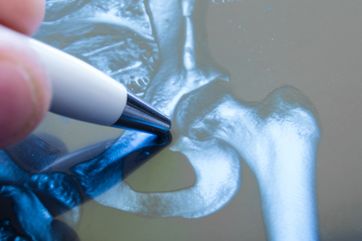Beyond calcium, vitamin D, supplements may do more harm than good for bones
LOS ANGELES — When it comes to optimal bone health and fracture prevention, there is scant evidence for recommending supplementation with vitamins and minerals other than calcium and vitamin D, according to a speaker at the AACE Annual Scientific and Clinical Congress.

Despite a lack of empirical evidence that suggests any benefits, consumer surveys show that many people report taking various over-the-counter supplements for bone health, from phosphorus and magnesium to vitamins A, K or C, Daniel L. Hurley, MD, FACE, professor in the division of endocrinology, diabetes, metabolism and nutrition at the Mayo Clinic in Rochester, Minnesota, said during a presentation.
“For all of these vitamins and minerals and trace elements and their use in skeletal health, the first motto is do no harm,” Hurley said. “There is little data to recommend supplementation for any of these, except for calcium and vitamin D.”
The second motto, Hurley said, is to “try and do good.” Calcium and vitamin D, he noted, are safe and effective to help prevent bone loss and fracture.
“They should never be used alone in the treatment of bone loss and prevention of osteoporosis, because they are ineffective in that regard,” Hurley said. “But they are very helpful together, especially for those patients not taking calcium and likely deficient in vitamin D.”
Even early on in the perimenopausal period and in the immediate postmenopausal period, fracture risk increases, Hurley said.
“So it is understandable that if there is something that is available to us as a supplement, as a mineral, that we could take to help decrease fracture risk, that that would be very important indeed,” he said.
Some of the popular OTC supplements include the following:
Phosphorus — Phosphorus is plentiful in the diet, especially in processed foods and soda, is readily absorbed in the gut, is enhanced by vitamin D and does not interfere with calcium absorption, Hurley said. However, because the mineral is so ubiquitous, it is rare to be deficient, and there is no evidence linking phosphorus supplementation with a reduction in fracture risk, he said.
Magnesium — Magnesium is found widely in foods; however, about 48% of U.S. residents do not meet the recommended daily allowance for the mineral, which is an intracellular cation necessary for calcium and potassium homeostasis. Effects on magnesium and bone mineral density have been reported to be variable, Hurley said. In an analysis of the Women’s Health Initiative, researchers observed a higher hip BMD in women in the highest quintile of magnesium intake; however, there was no observed effect on fractures.
Fluoride — Fluoride, which is naturally present in soil and water, has a variable effect on skeletal health depending on dose, Hurley said. At a low dose of 25 mg twice daily, fluoride can stimulate bone osteoblastic growth, although the mechanism is unclear. However, at a higher dose of 75 mg three times daily, patients may be susceptible to nonvertebral fracture, and fluoride may cause abnormal mineralization, Hurley said. Gastrointestinal side effects with the mineral have also been observed.
Strontium — Found primarily on the surface of the bone apatite crystal, strontium has a chemical similarity to calcium, Hurley said, and it is rapidly incorporated into the bone. “When strontium gets incorporated, it reduces resorption, stimulates formation, increases bone density but may not improve bone strength,” Hurley said. The supplement is not recommended, Hurley said, because the data on bone health are limited, whereas researchers have noted a signal for increased cardiovascular events with strontium use, as well as drug-like rash effects. It is not FDA-approved in the United States, and in Europe, the indication for strontium was recently restricted to severe osteoporosis only, Hurley said.

Vitamins — Evidence is conflicting and studies are small with respect to vitamins A, K (vitamins K1 and K2), E and C as supplements for bone health, Hurley said. Observational studies suggest that vitamin E is generally positive; however, very high levels of vitamin E may interfere with vitamin K, he said.
Trace elements — There are no long-term studies that show fracture risk reduction when supplementing with trace elements, such as zinc, copper, iron and selenium. “We cannot support any trace elements for skeletal health,” Hurley said. “There is data out there ... but there are just no long-term studies. Although there is suggestion that these could be helpful, these are just hypothesis generating.”
Hurley noted that current AACE clinical practice guideline for the diagnosis and treatment of postmenopausal osteoporosis recommend sufficiency of both calcium and vitamin D as part of the treatment regimen. A patient’s total calcium intake should be assessed from both diet and any supplement use, and the total daily amount of calcium should not exceed 1,200 to 1,500. A reasonable clinical approach for vitamin D is an intake of at least 1,000 IU per day for adults aged at least 50 years, as vitamin D inadequacy is common in those with a low BMD or prior fragility fracture, according to the guideline.
“We have no idea what we should give for a supplement dose, unless it comes to calcium and vitamin D, so even if we wanted to recommend a supplement, I would have no idea how to advise you, other than to make sure your patients are meeting the [Dietary Reference Intake],” Hurley said. “A multivitamin is probably not a bad idea if someone is not eating a healthy diet.” – by Regina Schaffer
Reference:
Hurley DL. Calcium, vitamin D and other nutrients for bone health. Presented at: AACE Annual Scientific and Clinical Congress; April 24-28, 2019; Los Angeles.
Disclosure: Hurley reports no relevant financial disclosures.


